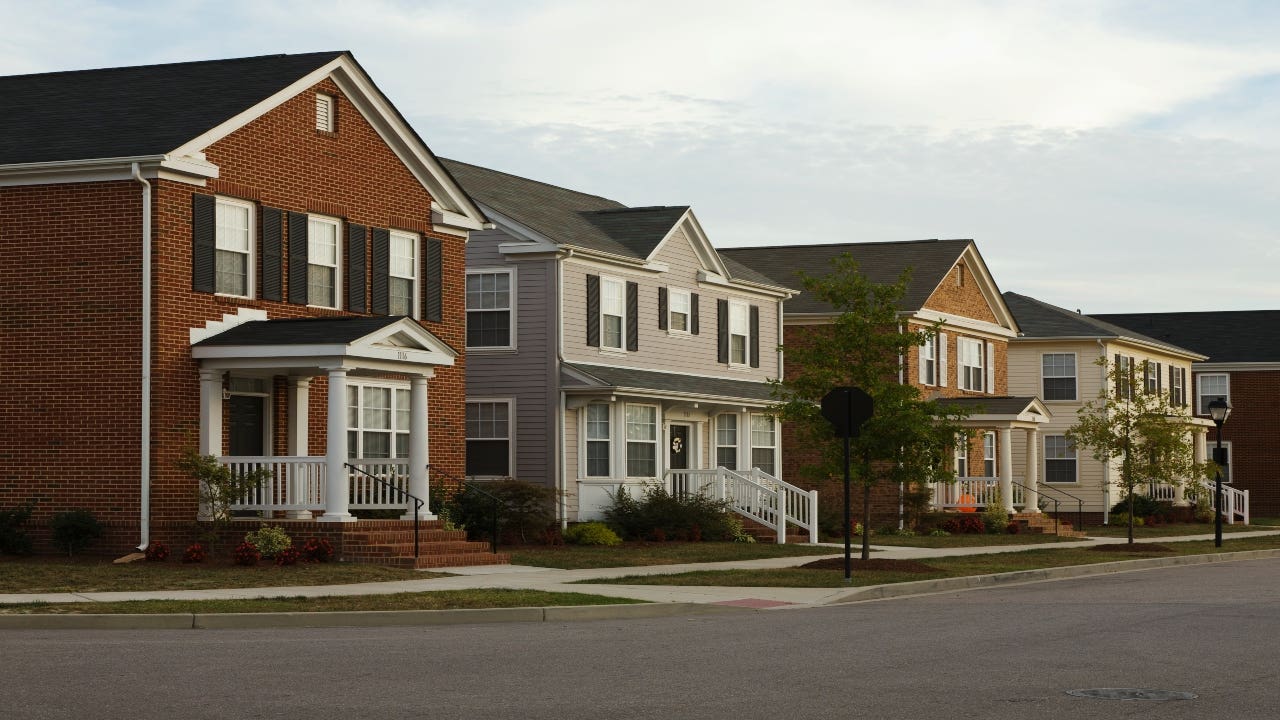What is a deed in lieu of foreclosure?

The Bankrate promise
At Bankrate we strive to help you make smarter financial decisions. While we adhere to strict , this post may contain references to products from our partners. Here's an explanation for .
Key takeaways
- A deed in lieu of foreclosure allows you to avoid foreclosure by giving your lender the deed to your house.
- A deed in lieu can do less damage to your credit than a foreclosure but means you need to give up your home sooner.
- Lenders aren't required to accept a deed in lieu, so you may need to explore other foreclosure alternatives.
Some homeowners are faced with difficult financial choices, especially if they have lost a job and are living off of dwindling savings. A deed in lieu of foreclosure could be one of the solutions a homeowner turns to in times of extended financial hardship.
What is a deed in lieu of foreclosure?
To understand what a deed in lieu means, it’s important to know first that the property deed is the legal document that transfers ownership to a certain party. In addition, foreclosure is the process that a lender starts when you stop paying your mortgage.
So, a deed in lieu of foreclosure is the legal process in which the title of a home (the deed) is transferred from the homeowner to their mortgage lender to prevent (in lieu of) foreclosure.
If you complete the deed in lieu of foreclosure, your lender gets the house. This is an option for people who have little to no equity in the home and can’t afford their monthly mortgage payments.
You might be wondering: Will I owe money after a deed in lieu of foreclosure? The answer is no. After the transfer, you’re no longer obligated to repay the mortgage, and you’ll be released from your mortgage debt. Once the deed in lieu is complete, your lender will attempt to sell the home to pay off the remaining debt.
The deed in lieu is the legal document that is signed by the homeowner to make the transfer complete, says Jackie Boies, a senior director of Partner Relations at Money Management International, a nonprofit debt counseling organization based in Stafford, Texas.
How to get a deed in lieu of foreclosure
It’s not always simple to get a deed in lieu of foreclosure, but the process starts with contacting your mortgage servicer. You have to qualify for a deed in lieu, so you’ll need to speak with your servicer to understand all of its loss mitigation options.
Some mortgage lenders will not agree to a deed in lieu, depending on the current property condition and if there are tax liens or judgments against it for failure to pay property taxes. Lenders are responsible for any judgements or tax liens, says Boies, so they have to consider the cost of releasing any liens as part of the deed in lieu.
“The representative will discuss your financial situation and verify that you’re unable to afford your mortgage, a disposition option is needed and which of them is the best fit,” says Boies. “Your mortgage servicer does not have to offer a deed in lieu.”
Some of the determining factors are based on the requirements of Fannie Mae, Freddie Mac, the USDA or the VA (if the loan is guaranteed by any of those parties). For example, Freddie Mac requires you to have experienced an eligible hardship to qualify. The current market value of the home also has an impact on your servicer’s decision.
Reasons a lender might reject your deed in lieu
While a deed in lieu can be an excellent option for you as the borrower, your servicer does not need to agree to one. Your approval odds depend on a variety of conditions, including:
- Your current mortgage balance
- The number of payments you’re behind on
- The property’s value
- Local real estate market conditions
If the lender thinks it could sell your property quickly and recoup its cost, it might agree. If homes are selling slowly in your area, the lender may not want to take on the responsibility for upkeep after you’ve moved out.
Reasons a lender might accept your deed in lieu
All of this said, when comparing a foreclosure vs. deed in lieu, the deed in lieu can offer the lender some benefits. Specifically, a lender might offer you this option for:
- Lower costs — litigation during foreclosure isn’t cheap for the lenders, either
- The possibility of selling your house in a hot local market
- Better property condition (since you’re turning the keys over willingly, you’re less likely to trash the place)
- A faster process than going through a full-blown foreclosure
Foreclosure vs. deed in lieu
A foreclosure and a deed in lieu have one main thing in common: In either situation, the lender takes full ownership of a property from a homeowner who hasn’t made their mortgage payments. But there are also several differences between the two, including:
Deed in lieu
- Mutual agreement between a homeowner and their lender
- In exchange for returning the property to the lender, the homeowner’s financial obligations end
- Can stay on a credit report for four years
Foreclosure
- Involuntary arrangement where the lender takes back the property from the homeowner
- Lender might take steps to recoup any money owed
- Can stay on a credit report for up to seven years
A deed in lieu of foreclosure is generally a last-resort step taken by a homeowner to avoid a foreclosure, says Alesia Parker, branch manager at Silverton Mortgage, an Atlanta-based residential lender. In a foreclosure, the bank could sue the homeowner for any amount they were unable to recoup if the home sells for less than what is owed on the mortgage — known as a deficiency judgment.
“A deed in lieu of foreclosure can help you avoid litigation,” says Parker. “It is generally a much quieter transaction than a foreclosure, meaning it may help the homeowner avoid some embarrassment and some costs associated with foreclosures. It is also possible that the homeowner’s credit will be less impacted compared to a full foreclosure.”
Is a deed in lieu of foreclosure right for you?
Sometimes, taking a deed in lieu is a logical option — but it depends on your specific circumstances. For example, if you give up your home willingly, some lenders offer relocation assistance to help you find a new place to live. Plus, with a deed in lieu, you’re more likely to have your mortgage balance forgiven, which will also help you get back on your feet.
Here’s what else to consider before agreeing to a deed in lieu.
Benefits of a deed in lieu of foreclosure
- It likely has a lower impact on your credit score.
- It may make it possible to buy a house sooner.
- There’s less public embarrassment: Your home won’t be listed as foreclosed for neighbors to see.
Homeowners who have exhausted all of their options might find a deed in lieu to be a more favorable solution because the impact on their credit is generally less harmful than a foreclosure.
“While it is still likely to impact your credit negatively, certain lenders may look more favorably upon borrowers who completed a deed in lieu agreement rather than foreclosure,” says Parker.
The costs, also, are generally lower for both the lender and homeowner when it comes to a deed in lieu, says Parker, because the litigation is removed.
Disadvantages of a deed in lieu of foreclosure
- You will have to surrender your home sooner.
- You may not pursue alternative mortgage relief options, like a loan modification, that could be a better option.
- You’ll likely lose any equity in the property you might have.
The biggest cons are the borrower’s loss of the property and any income or investments associated with it. Most homeowners struggle with surrendering the home they put so much effort into purchasing and maintaining.
“Making and accepting that hard decision is the first hurdle,” says Boies. “Once the decision is made, many homebuyers finally get the peace of mind they’ve been looking for. The deed in lieu represents a less damaging method of relinquishing your home.”
Another disadvantage is you will not be in control of your home sale and how much the mortgage company recoups once sold. You might also pursue a deed in lieu of foreclosure without realizing that other options could be available. Homeowners usually can miss several payments before foreclosure proceedings start, so you have time to look into alternatives.
Deed in lieu and your taxes
The Mortgage Forgiveness Debt Relief Act, which has been extended through December 2025 with the Further Consolidated Appropriations Act of 2021, relieves homeowners from having to pay taxes on the part of the debt that is forgiven with a deed in lieu of foreclosure.
“You’ll want to speak with your tax professional regarding any tax liabilities you might incur based on your unique financial position,” says Boies.
Alternatives to avoid foreclosure
If you’re experiencing hardship, avoid waiting until the last minute to discuss your options — including a deed in lieu of foreclosure — with your mortgage lender or servicer.
“Don’t be afraid to speak with them if they call, and open the mail from them — avoiding the problem won’t resolve it,” says Boies.
If you’ve already missed one or more payments, reach out to your lender and be honest about your financial situation. See what options for loss mitigation they can offer you to avoid foreclosure.
Loan modification
Many lenders want to avoid foreclosure, so they might offer to modify your loan. A loan modification is similar to a refinance and can help you get caught up on your mortgage with more affordable payments, avoiding foreclosure altogether.
Short sale
A short sale is another alternative you can ask for if you can’t make your mortgage payments. Like a deed in lieu of foreclosure, in a short sale, the homeowner and their lender come to an agreement. In this case, though, the agreement is for the home to be sold for less than the balance due on the mortgage.
“Once a sale is made, the lender forgives the remaining balance of the loan,” says Parker. “A deed in lieu of foreclosure is different because it transfers the property to the lender instead of selling it to a new buyer.”
Lenders could require an attempt at a short sale before agreeing to a deed in lieu. Either way, “if you agree to a short sale or a deed in lieu, you want to make sure that you will not be held responsible for the unpaid balance of your mortgage,” says Boies.
Frequently asked questions
-
Yes, a deed in lieu of foreclosure can hurt your credit score. It can also stay on your credit report for four years.
-
Reach out to your lender to request a loss mitigation packet, which will include an application and explain which documents you need to submit. Required documentation may include tax returns, bank statements, pay stubs and proof of your expenses. To finalize things, you’ll need to sign the deed in lieu.
Related Articles



